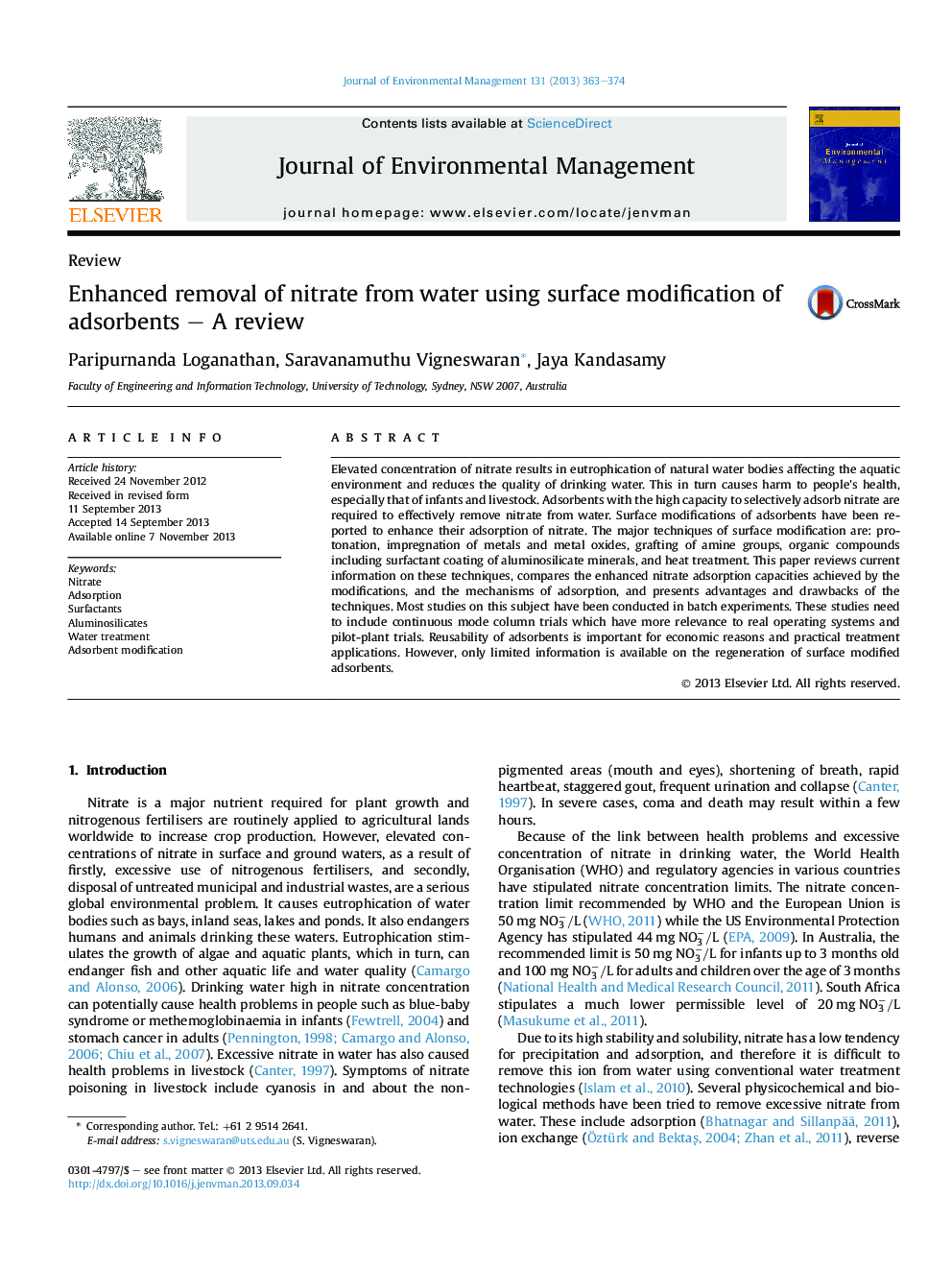| کد مقاله | کد نشریه | سال انتشار | مقاله انگلیسی | نسخه تمام متن |
|---|---|---|---|---|
| 1055964 | 1485281 | 2013 | 12 صفحه PDF | دانلود رایگان |

• Surface modification of adsorbent enhanced nitrate adsorption.
• Modification increased positive charges and added new functional groups on surface.
• Surface protonation, amination, and coatings with metal, metal oxide, organic compounds.
Elevated concentration of nitrate results in eutrophication of natural water bodies affecting the aquatic environment and reduces the quality of drinking water. This in turn causes harm to people's health, especially that of infants and livestock. Adsorbents with the high capacity to selectively adsorb nitrate are required to effectively remove nitrate from water. Surface modifications of adsorbents have been reported to enhance their adsorption of nitrate. The major techniques of surface modification are: protonation, impregnation of metals and metal oxides, grafting of amine groups, organic compounds including surfactant coating of aluminosilicate minerals, and heat treatment. This paper reviews current information on these techniques, compares the enhanced nitrate adsorption capacities achieved by the modifications, and the mechanisms of adsorption, and presents advantages and drawbacks of the techniques. Most studies on this subject have been conducted in batch experiments. These studies need to include continuous mode column trials which have more relevance to real operating systems and pilot-plant trials. Reusability of adsorbents is important for economic reasons and practical treatment applications. However, only limited information is available on the regeneration of surface modified adsorbents.
Figure optionsDownload as PowerPoint slide
Journal: Journal of Environmental Management - Volume 131, 15 December 2013, Pages 363–374